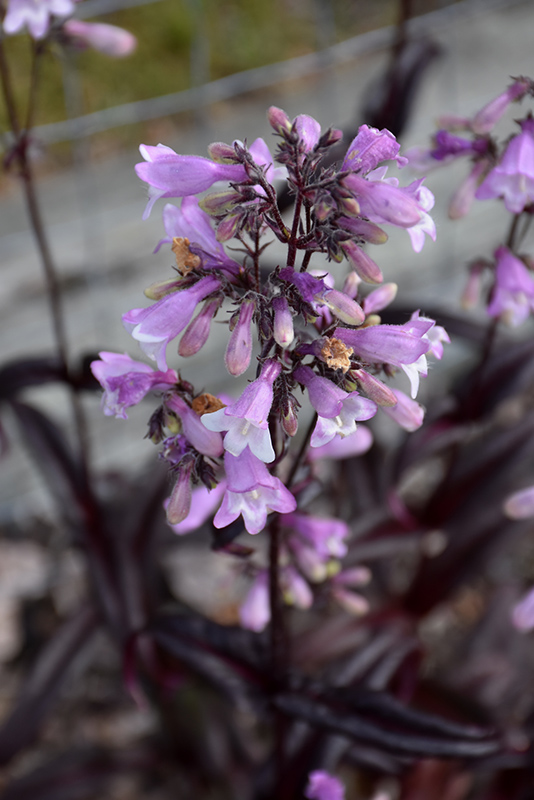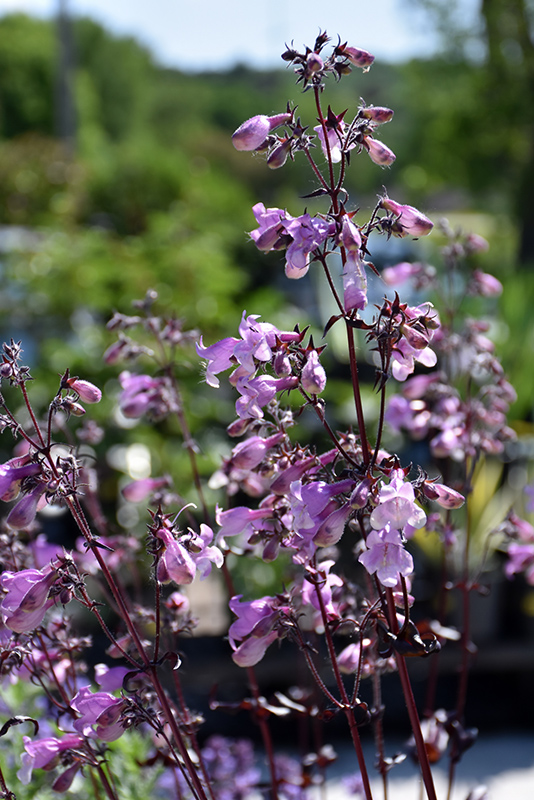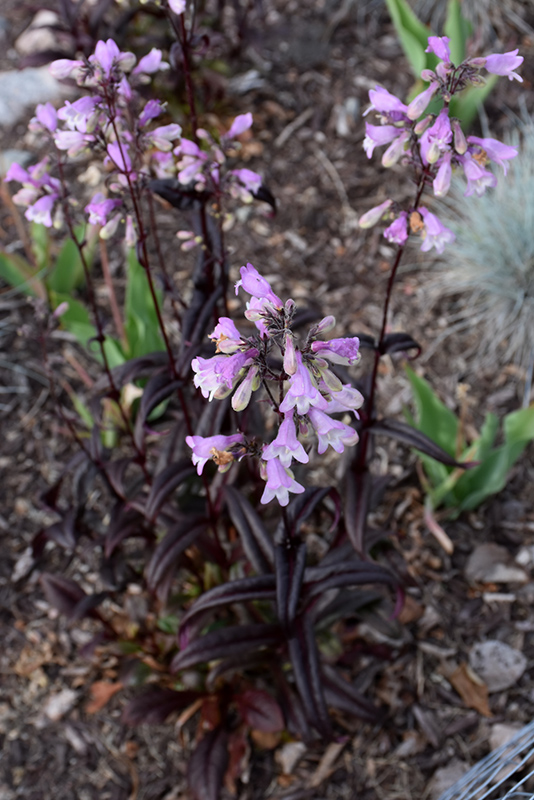Midnight Masquerade Beard Tongue
Penstemon 'Midnight Masquerade'
Height: 4 feet
Spacing: 28 inches
Sunlight:
![]()
![]()
Hardiness Zone: 3a
Other Names: Beardtongue
Brand: Proven Winners
Description:
An impressive penstemon producing lavender purple flowers with pure white interiors, rising above deep burgundy-purple foliage on equally dark stems; makes a beautiful visual impact when massed in the garden, along walkways, or in borders
Ornamental Features
Midnight Masquerade Beard Tongue has masses of beautiful spikes of lavender tubular flowers with purple overtones and white centers rising above the foliage from early to mid summer, which are most effective when planted in groupings. The flowers are excellent for cutting. Its attractive glossy oval leaves remain deep purple in color with pointy dark red spines and tinges of burgundy throughout the season. The dark red stems can be quite attractive.
Landscape Attributes
Midnight Masquerade Beard Tongue is an herbaceous perennial with an upright spreading habit of growth. Its relatively fine texture sets it apart from other garden plants with less refined foliage.
This is a relatively low maintenance plant, and is best cleaned up in early spring before it resumes active growth for the season. It is a good choice for attracting butterflies and hummingbirds to your yard. It has no significant negative characteristics.
Midnight Masquerade Beard Tongue is recommended for the following landscape applications;
- Mass Planting
- Border Edging
- General Garden Use
- Container Planting
Planting & Growing
Midnight Masquerade Beard Tongue will grow to be about 3 feet tall at maturity, with a spread of 32 inches. When grown in masses or used as a bedding plant, individual plants should be spaced approximately 28 inches apart. It grows at a fast rate, and under ideal conditions can be expected to live for approximately 10 years. As an herbaceous perennial, this plant will usually die back to the crown each winter, and will regrow from the base each spring. Be careful not to disturb the crown in late winter when it may not be readily seen!
This plant does best in full sun to partial shade. It prefers dry to average moisture levels with very well-drained soil, and will often die in standing water. It is considered to be drought-tolerant, and thus makes an ideal choice for a low-water garden or xeriscape application. It is not particular as to soil type or pH. It is highly tolerant of urban pollution and will even thrive in inner city environments. This particular variety is an interspecific hybrid. It can be propagated by division; however, as a cultivated variety, be aware that it may be subject to certain restrictions or prohibitions on propagation.
Midnight Masquerade Beard Tongue is a fine choice for the garden, but it is also a good selection for planting in outdoor pots and containers. With its upright habit of growth, it is best suited for use as a 'thriller' in the 'spiller-thriller-filler' container combination; plant it near the center of the pot, surrounded by smaller plants and those that spill over the edges. It is even sizeable enough that it can be grown alone in a suitable container. Note that when growing plants in outdoor containers and baskets, they may require more frequent waterings than they would in the yard or garden.
A NetPS Plant Finder tool




